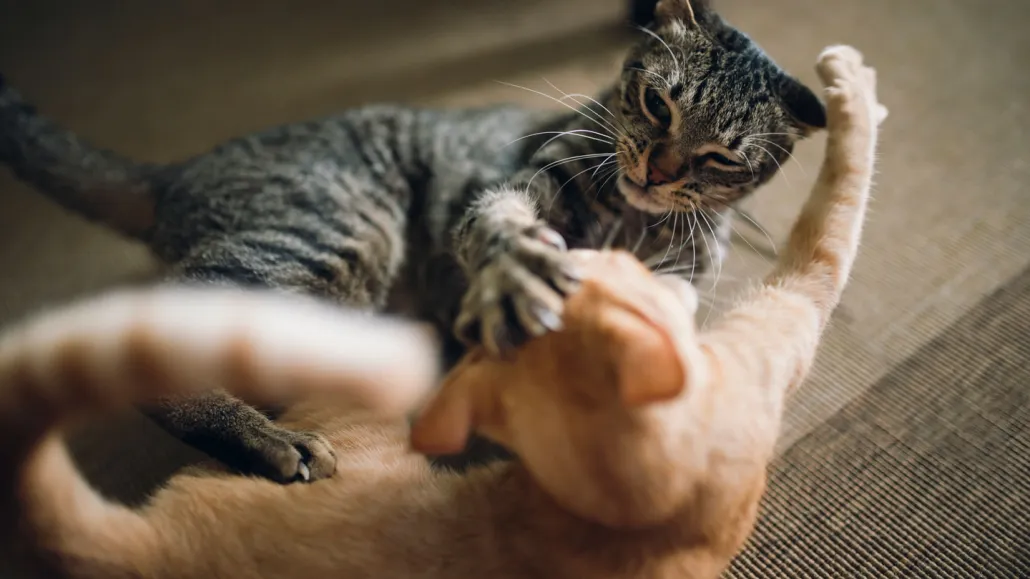
These two cats are interacting in a way that falls somewhere between playing and fighting, according to a new study that could help owners better read their pets’ body language to determine if they are friends or foes.
Westend61/Getty Images Plus

These two cats are interacting in a way that falls somewhere between playing and fighting, according to a new study that could help owners better read their pets’ body language to determine if they are friends or foes.
Westend61/Getty Images Plus